Types of Production Systems
Have you ever wondered how large manufacturing firms are able to produce on a large scale without any hassle? The answer to this question comes with insight into the production system.
Many companies use similar or distinct production systems depending on the production volume. With a clear understanding of the various types of production systems and how they work, producing the desired output and result is easy.
This article sheds light on the dynamics of production systems and brings you a step closer to a clear understanding of their types, characteristics, and applications.
Let's get started.
What Is a Production System?
A production system is the organized heartbeat of a company, bringing together all the elements to create products. This system is a well-thought-out plan where resources, like materials and equipment, are carefully combined to create something valuable.
The production system involves processes that follow the company's rules and add extra worth to the end product.
Every company has its way of doing this; it is their special recipe for making things on the production line. Different departments or teams may have distinct methods within the same company.
Every production system has limits. These limits are like rules for how much the system can handle and how good the final product is. Companies always try to improve their production systems to work faster and smoother and give out outstanding products.
A production manager is vital in optimizing this system, always striving to find the best way to do things and ensure everything runs smoothly.
Product layout is the arrangement of everything neatly and enhances the production system's work. A good production layout organizes the production line to ensure materials flow smoothly and the operations follow the correct sequence.
Whether it's a straightforward assembly line or a customized setup, the product layout significantly influences the overall design of the production system.
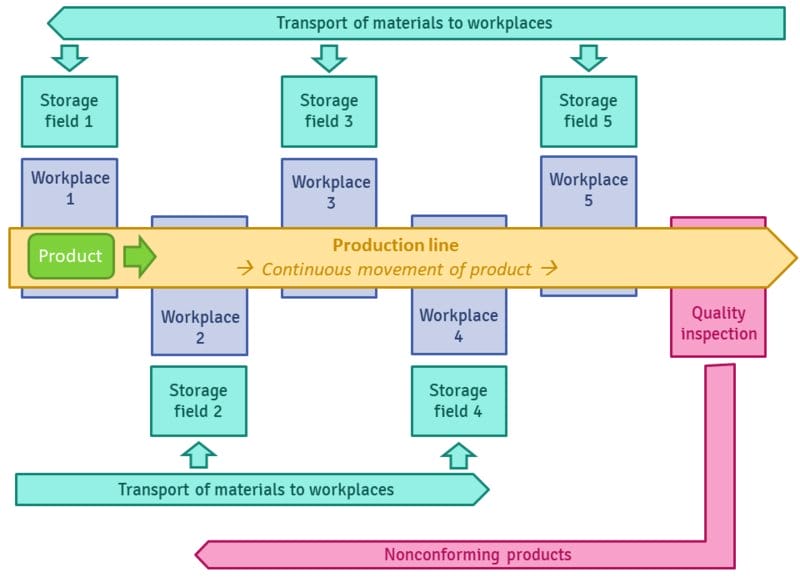
Types of Production System
There are different types of production systems.
1. Batch Production System
Batch production systems involve repeatedly making groups of similar products rather than one by one. Manufacturers determine the batch size and frequency.
The production process occurs in stages, with each batch of discrete parts moving through these stages, allowing efficient product differentiation.
In this batch manufacturing system, the job passes through various functional departments in lots or batches, each with a distinct routing.
This method focuses on producing a specific number of similar products, usually in large volumes. These products are manufactured periodically, stored until needed, and then sold. The planning for the next batch ensures a continuous and efficient production cycle.
Batch production creates similar items in groups, progressing through each stage together. The involvement of workers varies depending on the product type.
Typically, machinery handles most of the production, with workers participating primarily at the beginning and end of the process.
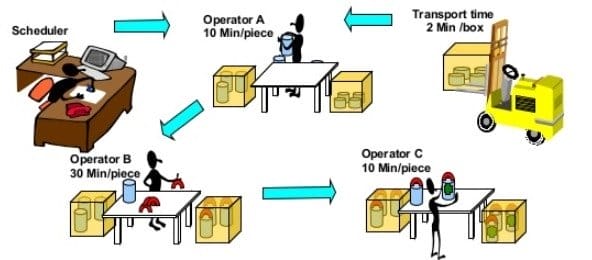
2. Mass Production System
Mass production is the continuous production of product lines for an extended period, using automation or assembly lines to achieve high-volume production of similar items.
This creative method, known as constant system production or series reduction, is closely linked to modern capitalism emerging after the Industrial Revolution.
Mechanization is vital, enabling labor division, monitoring, quality control, and efficient material flow.
Another name for mass production is flow production. Mass production efficiently creates standardized products on a large scale. Typically, using assembly lines or automation technology is crucial in meeting the demand for numerous similar items.
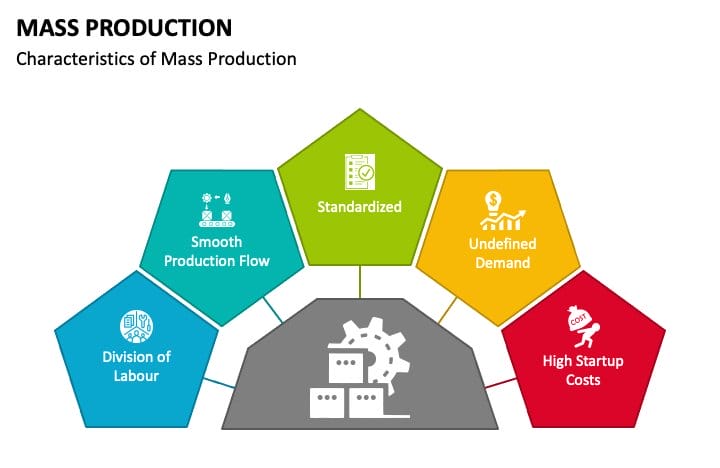
You can trace the genesis of the mass production system to the military. Long ago, the military needed many uniforms and supplies, and this kickstarted the idea of making things the same way in large quantities.
Advanced precision machines have sped the demand for affordable, mass-produced goods with fewer workers, signaling a significant evolution in industries.
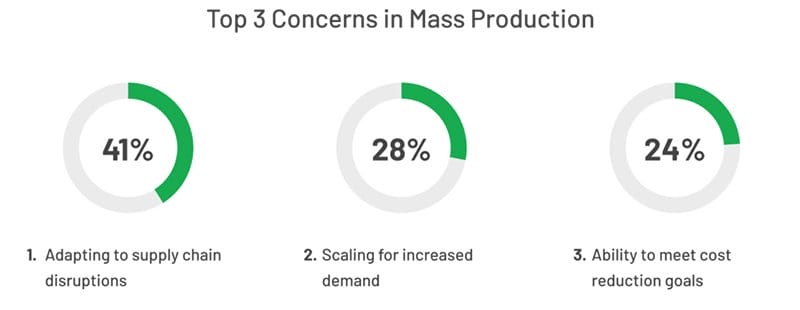
3. Job Shop Production System
A job shop is a specialized manufacturing business that creates unique and personalized products for customers. It involves the creation of tailor-made or custom-built parts, producing goods in small quantities according to specific customer orders.
The business thrives on customization, taking pride in its ability to deliver distinct and individualized solutions.
This personalized production model sets job shops apart, offering a hands-on and customer-centric approach compared to mass production methods.
The job shop production system, known as an “intermittent production system,” is characterized by handling custom or semi-custom manufacturing techniques for small to medium-sized customer orders.
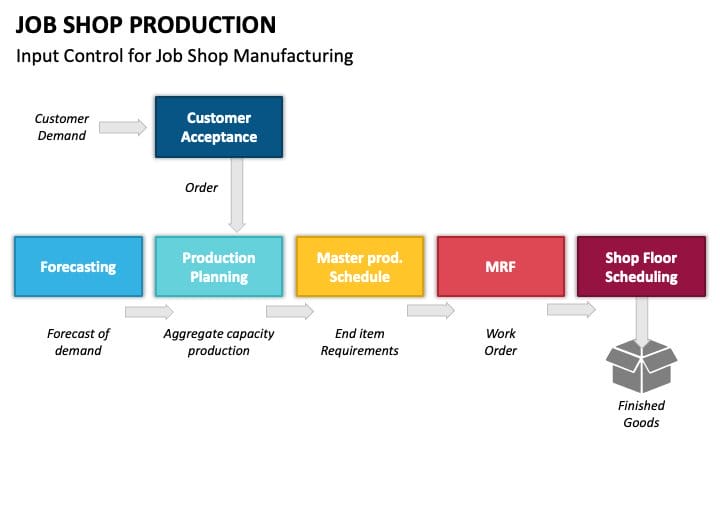
The production process in intermittent production involves general-purpose machines grouped together in shops, allowing flexibility with diverse machines in each shop. This flexibility is vital and prevents jobs from being confined to one machine.
In job shop manufacturing, products move through various stages, like machine shops creating components for local industries, farms, boats, ships, or aircraft parts. Common job shop types include gear manufacturing and fabrication shops.
The job shop scheduling challenge in computer science highlights the complexity of managing these diverse manufacturing and production processes.
4. Continuous Production System
Continuous production is a method that manufactures, produces, and processes materials without interruption, creating an ongoing flow process.
This production system includes constant movement, whether it is dry materials or liquids, going through chemical reactions, or getting heat treatment.
In contrast to batch production, designed for uninterrupted manufacturing, continuous production systems operate continuously.
Operating 24/7 with infrequent maintenance shutdowns, such as semi-annual or annual, continuous production ensures a steady workflow.
Some facilities, like chemical plants or blast furnaces, can operate for extended periods without stopping, ranging from one to two years or even up to ten years.
This production system aims to produce finished goods without interruptions, often called continuous manufacturing or smooth flow production.
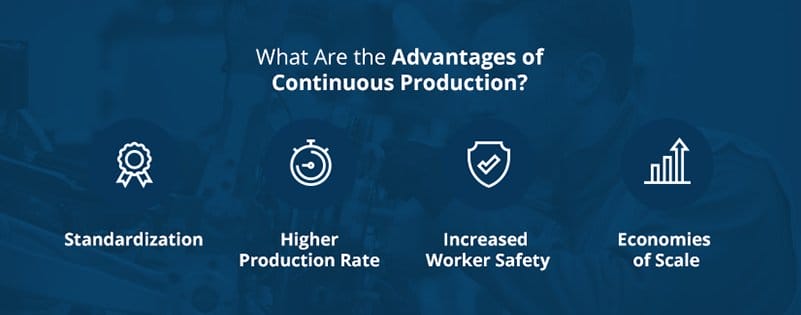
The continuous production system follows a predetermined sequence. In this setup, raw materials enter at one end, and finished products come out at the other, minimizing stops or changeovers.
Automation is vital in continuous production, material handling, quality control, and packaging. While the initial setup is complex and time-consuming, continuous production focuses on producing high volumes of standardized products while minimizing downtime.
Characteristics of Production System
Production systems exhibit various characteristics that influence their efficiency and operation.
1. Objective
The central aim of a production system is to fulfill specific goals that contribute to its overall success. These objectives include optimizing efficiency, reducing costs, upholding stringent quality standards, and meeting customers' demands.
Maximizing efficiency involves streamlining the production process to ensure the best use of resources, time, and effort. It helps in achieving higher output with minimal waste.
Reducing costs is essential. The various production systems aim for efficient resource use, cost-effective practices, and intelligent material handling to improve economic viability.
2. Feedback
Feedback in production systems is a friendly guide that ensures everything stays on track. This tool helps the system adjust as needed, like a GPS recalculating your route.
This constant monitoring and tweaking ensures the production process runs smoothly and maintains top-notch quality.
Collecting feedback ensures that the final products meet the high standards set by the system. It is like having a reliable co-pilot, guaranteeing each product design aligns with the desired design and quality.
3. Quality Management
Quality management is the backbone of production systems, ensuring that products or services meet the highest standards. It is not just a feature but a fundamental principle, acting as the guardian of customer satisfaction.
This management type is the safety net that guarantees what you receive is precisely what you anticipate, or even better.
4. Input Output Transformation
Input-output transformation is the engine that powers production systems, turning raw materials, labor, and energy into finished goods or services.
Imagine this process as the heart of the production, where raw materials, fueled by labor and energy, undergo a remarkable metamorphosis.
This transformation is not limited to manufacturing physical goods. It is just as influential in the service industry, where it shapes customer requests into fulfilled needs at regular intervals.
Different production systems use various layouts; one common approach is the line layout. This organized setup improves efficiency, ensuring things move smoothly from raw materials to the final product or service.
5. Process
The production process serves as the blueprint for bringing valuable creations to life. This process involves a series of steps and actions that transform raw materials into the final product.
Now, let's explore the various approaches to production.
- Job production involves creating a unique item tailored to a specific customer.
- Batch production is a system where you make several items simultaneously, creating a bunch in each go.
- Mass production is an assembly line that consistently produces many identical items.
- Continuous production is when the process runs non-stop.
So, whether creating custom pieces or producing a bunch in one shot, the production process is the key to turning raw materials into the finished product. It is the systematic approach that keeps the gears of production turning smoothly.
Explore Further
- What is ERP?
- What is Inventory Management?
- Best Inventory Management Software for eCommerce
- The Five Principles of Lean
- The Definitive Guide to ERP Implementation
- What is Kaizen?
- What is Inventory Control?
- Best ERP Software Systems
- What is Cloud ERP Software?
- How to Calculate Cost of Goods Manufactured